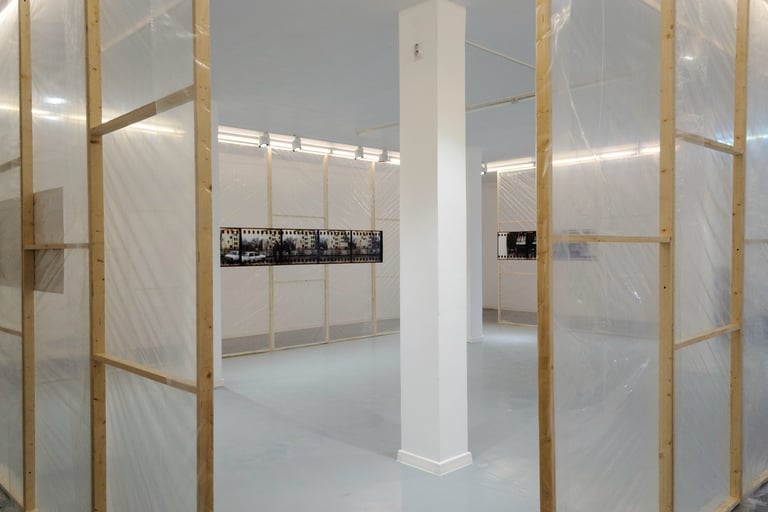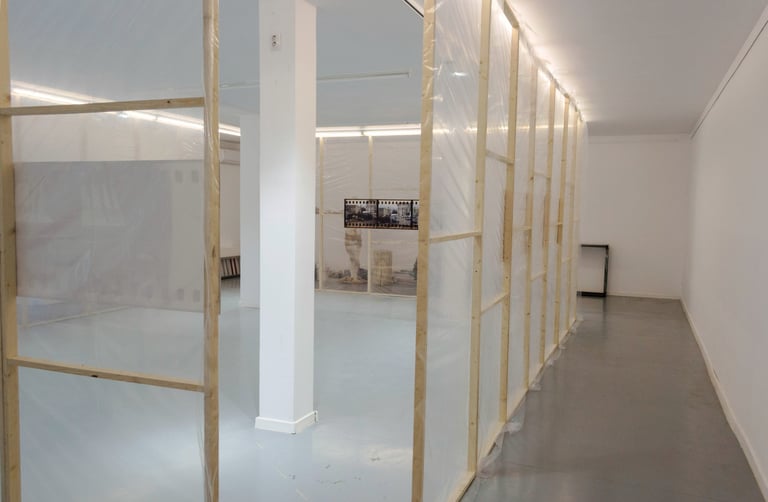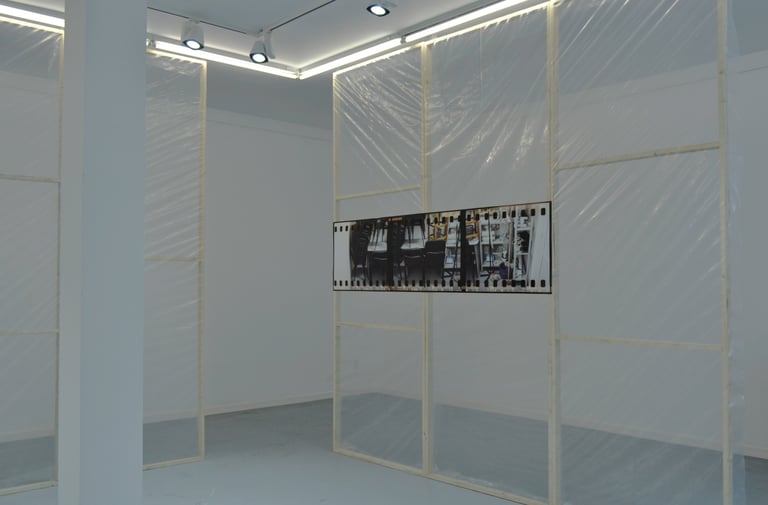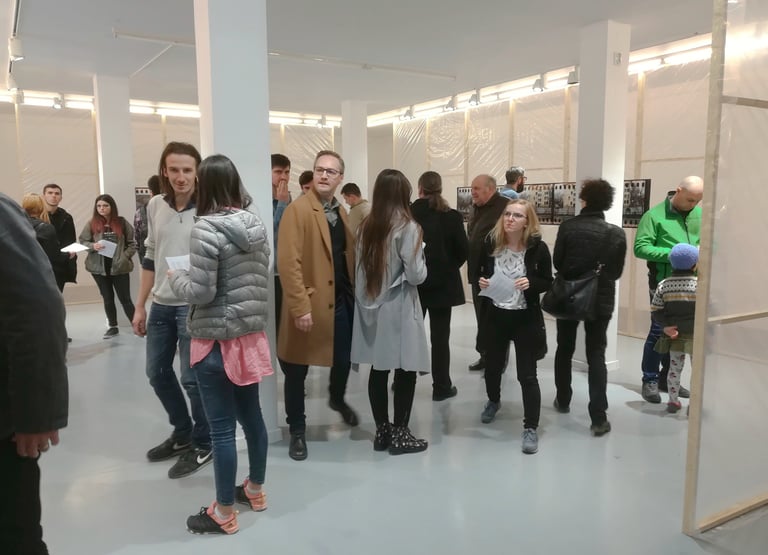





















on the margins of a speculative space
In his book of essays about the “margins of philosophy”, Jacques Derrida discussed the referential force of the margins of each page we read in a book, margins that at first appear to us as blank, negative, invisible, but which contain in subsidiary the thoughts of the readers who “manufacture traces” in the differential act of reading. We could find these margins in the experiential installation exhibited in the gallery, in which temporality has suspended itself in order to make room for inter-spatial speculation.
Nowadays we see the variations of the philosophy of “speculative realism”, and if we were to speculate on the margins of Quentin Meillassoux’s thought we could wonder, in the experience of visiting the exhibition, whether the space we cannot see exists independently of our presence in it, whether it is necessary to admit the contingency of correlating with the potential invisible space, whether we do, indeed, know a space we believe to be familiar just because we pass through it every day.
In his project of “photography-based research”, Teodor Bădărău has processed the “space on the outside of the exhibition space” through simulation, representation and interpretation, involving the relations “anterior auctorial presence” – “initial absence of the viewer” in an act of constructing a paradoxical “differential network” which also engages solitude, alienation and nihilism with interventionism, intersubjectivism and experiential conceptualism.
His research did not involve a linear investigation starting from an intuition, documenting the factuality of the space of the gaze in observational objectivist manner, selecting the data confirmed through the experiment of the work process, designing a representation system in order to communicate as convincingly as possible the experience of his explorative design, but instead it involved the creation of a receptive experience that has placed the audience in a situation of ambiguity, only to immerse it afterwards in a clarification reflection subsequent to surprise.
According to the artist, the aim was to investigate the subsidiary of images, the issues related to the positioning of the photographer, of the camera, of the viewer, and, through this, to the positioning of the subject of representation and of the viewing subject in an unclear intersectionality, as long as the image is the negative of objectuality in relation to spatiality, thus triggering an experience of a fracture between “reality” and its representation as the product of subjective perceptions and reactions, from the perspective of auctorial individuality.